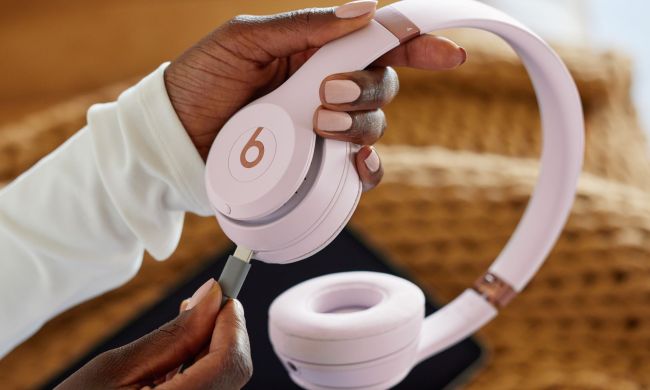
Cambridge Audio is no stranger to the audiophile world or its denizens, who like to obsess over sound quality. So it’s no surprise that the company’s first set of wireless headphones — the Melomania P100 — have a bunch of features aimed squarely at this market. You can buy the new noise-canceling cans for $279 in either black or white starting in July at both cambridgeaudio.com and Amazon.
Design-wise, the P100 may share many design traits with other flagship headphones — the aluminum and plastic materials are especially reminiscent of Bose’s recently released QuietComfort Ultra Headphones — but under the surface lurks an unusual feature: The company has equipped the P100 with AB amplification, typically reserved for dedicated hi-fi components. It’s the same audiophile-grade technology that Cambridge Audio used in its Melomania M100 wireless earbuds.
Enthusiasts tend to agree that AB amplifiers produce better sound quality than the class D amplifiers you’ll find in the majority of wireless headphones, earbuds, and speakers. However, class D amps tend to be more efficient, making them the obvious choice when dealing with a battery’s limited power capacity.

This makes the P100’s claimed battery life all the more stunning. Cambridge Audio says you’ll get up to 60 hours when ANC is turned on and a gigantic 100 hours if you leave it turned off. In the unlikely event you run out of juice, a quick-charge feature gives an extra two hours of ANC-based playtime after just five minutes of charging.
The ANC technology is similar to many headphones in this space: You can select from ANC on, ANC off, and transparency modes.
If you’ve got one of the few smartphones that supports Qualcomm’s Snapdragon Sound platform, the P100 can also deliver lossless, CD-quality audio via the aptX Lossless Bluetooth codec. If you don’t have that kind of phone, you can still get lossy hi-res audio from the aptX Adaptive codec, which is supported on many more devices. You can also avail yourself of Bluetooth Multipoint to maintain simultaneous wireless connections to two devices.
Still, if lossless audio is what you crave, the P100 lets you listen via two different wired connections: USB-C to 3.5mm jack or USB-C to USB-C, the latter of which is perfect for connecting to Android Phones or the iPhone 15.

The company says it has gone to great lengths to tune the P100’s custom 40mm triple-layer drivers to deliver the “Cambridge sound,” but inside the Melomania Connect app is a seven-band equalizer that can be used to adjust the sound signature to your specific tastes. There are also six presets if you’d prefer not to spend too much time moving sliders around.
An available game mode reduces wireless latency, and it’s possible the P100 could make for a great set of gaming cans — the company says the earcups have pads made from “carefully selected” memory foam covered in faux leather. It also claims that “enormous amounts of time and testing” were put into selecting the clamping force to suit the largest variety of head sizes.
Those earcup pads are user-replaceable, and astonishingly, so is that massive rechargeable battery — a rarity in the wireless headphone world.



